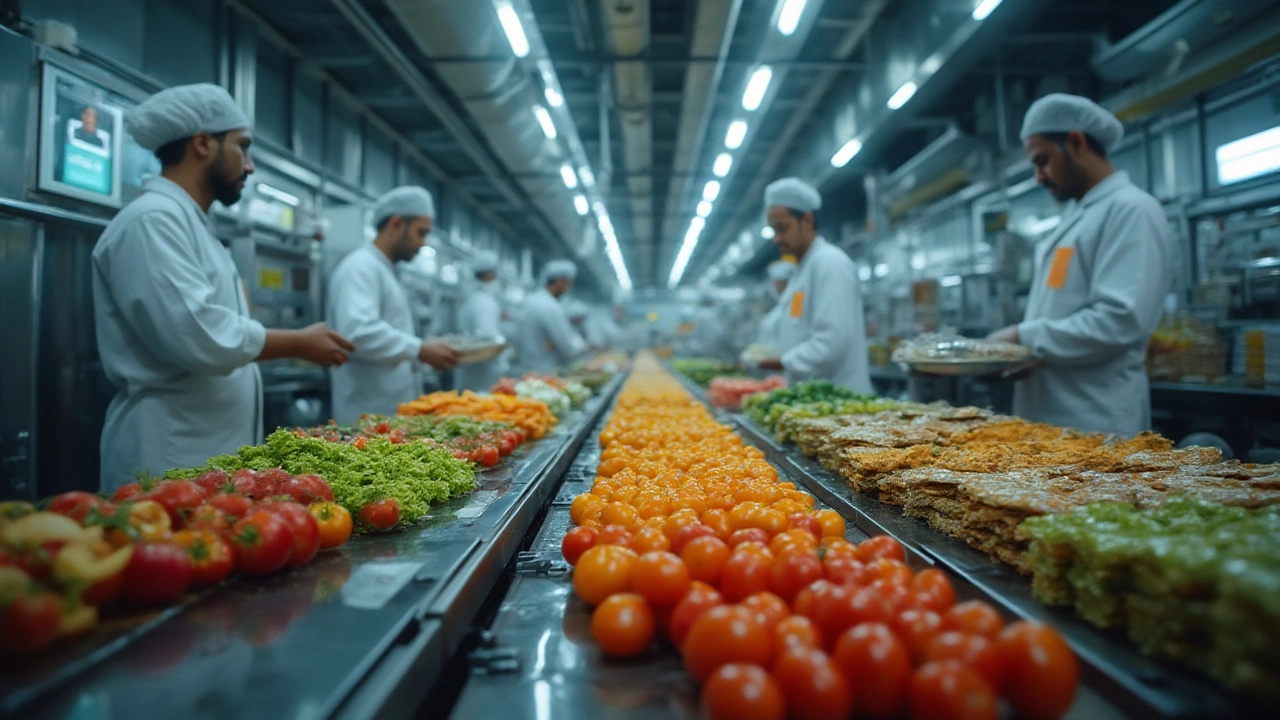Food Manufacturing: What’s Hot in India and How to Get Started
If you’re eyeing the food manufacturing space, you’ve landed in the right spot. India’s food market is booming, driven by rising incomes, urban lifestyles, and a craving for convenient meals. Below we break down the basics, the trends you can’t ignore, and clear steps to turn an idea into a real factory.
Why Food Manufacturing Is a Smart Move Right Now
First off, the demand side is crystal clear. Consumers are buying more ready‑to‑eat snacks, health‑focused products, and region‑specific flavors. That translates into steady orders for manufacturers who can deliver quality at scale. Compared with heavy‑industry sectors, food plants need less capital for equipment and can be set up in tier‑2 cities where land and labor are cheaper.
Second, the government is pushing the sector with incentives like reduced GST on processed foods, subsidies for cold‑storage, and schemes that help small units get certification quickly. All of this cuts the entry barrier for newcomers.
Step‑by‑Step Guide to Launch Your Food Manufacturing Unit
1. Pick a niche that solves a real problem. Look at posts like “Most In‑Demand Products in 2025” – snack bars, plant‑based proteins, and ready‑to‑heat meals are topping the list. Choose one that matches your expertise or local raw material availability.
2. Map the 5 M’s of your operation. The “Understanding the 5 M’s of Manufacturing” article outlines Man, Machine, Material, Method, and Measurement. For food, focus on skilled staff (Man), reliable processing lines (Machine), high‑quality ingredients (Material), standard recipes (Method), and strict quality checks (Measurement).
3. Get the right licences. You’ll need FSSAI registration, a pollution control board clearance, and sometimes a factory licence depending on the product category. The “Step‑by‑Step Guide to Launching a Small Scale Industry Successfully” walks you through the paperwork.
4. Choose equipment that can scale. Start with a modular line that lets you add capacity without a full plant overhaul. Look for locally made machines that offer service contracts – that keeps downtime low.
5. Build a quality system. Implement HACCP or ISO 22000 from day one. Consistency wins repeat orders, especially from larger retailers.
6. Plan distribution early. Whether you sell online, through wholesale, or direct to retailers, lock in logistics partners who can handle perishable goods. Cold‑chain providers are expanding in India, thanks to recent policy support.
After you have the basics in place, keep an eye on emerging trends. For example, “Largest Pharma Hub in India (2025)” shows how clusters of specialized production can boost supply chain efficiency. Think about locating near an agro‑processing hub to tap into shared services and talent pools.
Finally, keep testing new flavors and formats. The “Highest Demand Product Ideas for Manufacturing Startups” post highlights that quick pivots can capture market share fast. Use small‑batch runs to gauge consumer response before scaling up.
Food manufacturing in India is a mix of solid demand, supportive policies, and room for innovation. By following the steps above and staying tuned to market shifts, you can build a profitable operation that feeds the country’s growing appetite.
Food Processing Units Explained: How Food Factories Work and What You Should Know
Explore how a food processing unit transforms raw crops or meat into packaged goods. Dive into the machines, tech, safety, business, and daily life tied to food factories.
Read More




